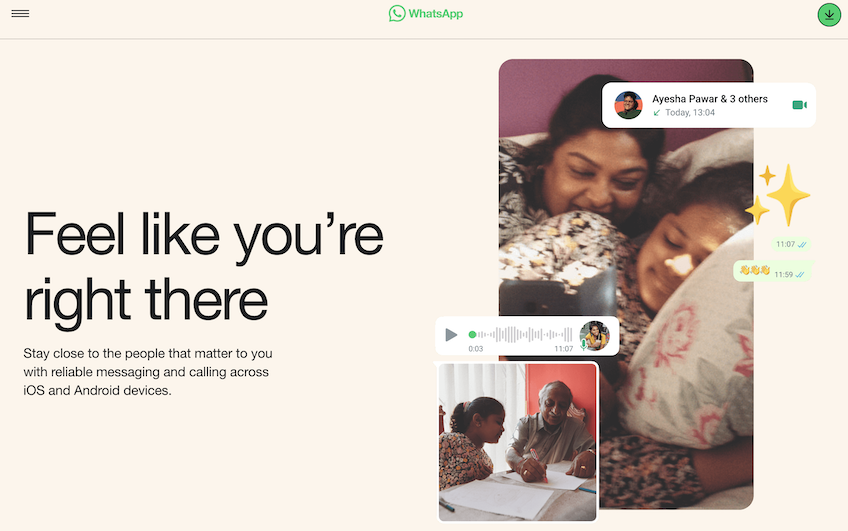A local call is one that is placed and received in the same zip code—or technically within the same switching center. Below, we’ll break down what a local call is, how it differs from a long distance call, and why local calls are now irrelevant.
Example of a local call
A common example of a local call is whenever a person calls the phone number of a local business near their home to get information about the store’s hours of operation. As long as the caller is in the same zip code as the final destination of their call, it only goes through a single switching center (and is therefore considered a local call).
If you call a friend in the same city, even if you are in the suburbs and they live downtown, that would be a local call. The same for businesses—if you work in the office and need to call your local paper supplier in the same city, it will count as a local call.
This doesn’t just apply to landlines. If you use your cell phone to order pizza at a nearby restaurant in your city, that also counts as a local call. It doesn’t matter if you’re using a cell phone and calling a nearby landline or someone else’s cell phone—as long as they’re in the same zip code, everything is considered local.
It’s all pretty clear. VoIP phone services even work the same way. If you use a VoIP service like Nextiva or RingCentral to call a local landline or mobile number, it’s also considered a local call.
Example of a long distance call
In contrast, a long distance call is any call made outside of a specified local area. A simple example of a long-distance call would be a telephone operator in New York calling a friend in Los Angeles—like what Alexander Graham Bell did when he made the first transcontinental call to Thomas A. Watson in 1915.
In any case, since both the caller and the recipient of a long-distance call occupy different postal codes, a call between them must pass through several switching centers to reach its destination, thus distinguishing it from a local call.
With long distance calls, you have two main types: domestic long distance calls and international long distance calls. The above example is an internal or national long distance call.
If the same person in New York called a friend in Berlin, Germany, it would be an international long distance call. The big thing here is to remember to dial the country exit code before dialing the other country’s designated code, followed by the actual phone number.
Because local calls are now irrelevant
Today, local calls are largely considered obsolete, largely due to VoIP technology providers (which make phone calls over the Internet possible) and the widespread adoption of cell phones.
Due to the fact that most people who use mobile phones no longer have landlines, the majority of calls they make are not limited to wired network connections. As a result, a call can easily go anywhere within a carrier’s network, which is usually the user’s entire country.
That said, the only real limitation there is is international calls. In this case, a single carrier such as AT&T or Verizon cannot complete the full path of an international call by itself. Instead, the call should be routed to another carrier in the destination country of the call. For example, a person in the United States using Verizon to call a company in the United Kingdom would need to be routed through a different carrier to successfully reach the destination.


Apps like WhatsApp and Zoom are good alternatives if you’re looking for cheap and easy international long distance calling options. With WhatsApp, you can make a voice call, send a text message, or make a video call with another person using the app for free as long as you use Wi-Fi. If you use data, you will be billed based on your phone’s data plan.
Zoom also makes it easy to chat with friends and colleagues over long distances. The free plan is usually sufficient for basic video calling, but you’ll probably want to upgrade to a higher-level plan if you’re using it for business calls. Again, if you’re using data rather than Wi-Fi to access Zoom, you’ll need to consider this cost.
The history of local calls
In years past, landlines were the primary and/or only method of making calls. As a result, almost all telephone lines were interconnected through a plain old telephone system (POTS), which is the analog voice transmission system that uses physical wires to operate.
In this traditional system, which emerged in the late 19th century and eventually replaced telegraphs as the primary means of communication, telephones required a direct connection over copper lines. In order to connect to another line, a person would make a call that went through their provider’s landline service switching center. Due to the physical limitations and scaling limitations of this wired system, the call switch should be performed in the caller’s local area. In other words, local calls were handled at the same switching center of a given postal code.
Long distance calls, on the other hand, were calls that had to be routed to another switch before reaching the recipient of the call. This process required extra time and money, so mobile phone companies often offered free local calls but charged per minute for long distance calls as a way to make money.
However, the introduction of mobile phones in 1973 by Motorola and the explosive growth of mobile phones and digital communications starting in the 1990s led to the radio frequency-based phone system widely used around the world today – leading to the decline of landline and local calling with it.
Understanding the changing nature of phone calls
The underlying technology of telephone calls has undergone some rapid changes over the past century. These changes have been accompanied by new devices and new calling habits of everyday consumers and businesses. By having a better understanding of these changes, you will be able to take advantage of new calling technologies as they emerge.
The big thing is to know that you are not limited to your carrier’s capabilities, especially when it comes to long distance calls. There really isn’t a good reason to pay a ton of money to make an international call when there are professional VoIP phone systems and commonly used apps like WhatsApp.

